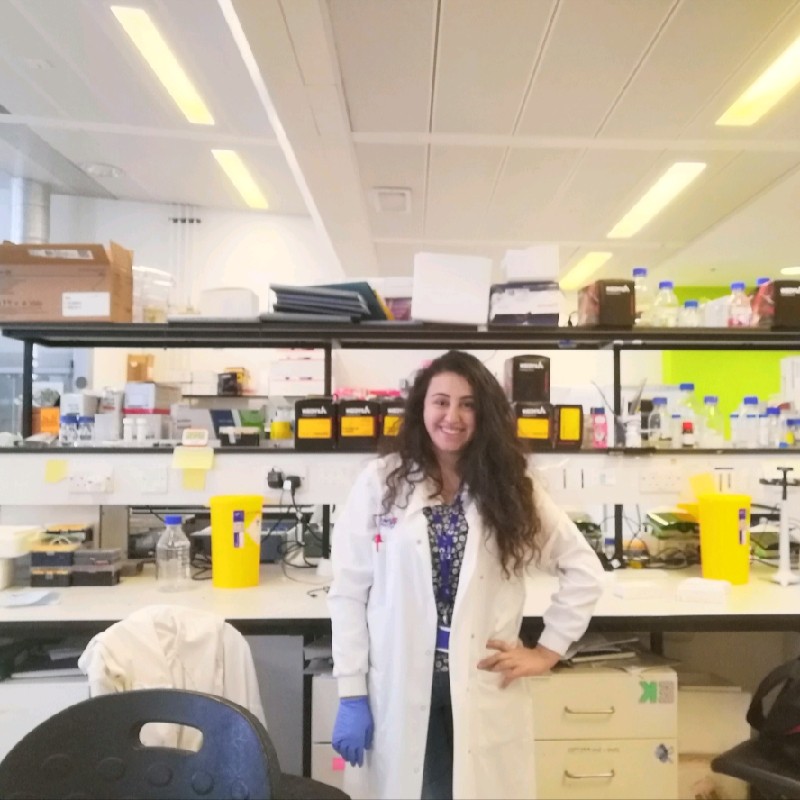Scientific Program

Berna Ozdem
Inonu University, Medical Biology And Genetics, Medical Sciences, Malatya, Turkey
Title: Exosomes and Their Role in Cancer
Biography:
Berna OZDEM is a cancer researcher by profession and works with Turgut OZAL Medical Center. He holds a BSc in Molecular Biology and Genetics and currently pursuing a Master degree in Medical Biology And Genetics at the School of Medicine, İnönü University. Berna has 2 years of abroad practice as a Molecular Biologist . She worked on cancer at IGBMC in France, and she worked at Newcastle University Cancer Center about prostate cancer treatment. She is currently working with new potential drug on Breast Cancer cells.
Â
Abstract
Extracellular vesicles (EVs) occur in eukaryotic and prokaryotic cells in the form of a phospholipid bilayer, spheroid, and through the plasma membrane directly or indirectly. They are categorized under four groups according to the cargo content, size, formation and secretion from the plasma membrane. Exosomes are the smallest of these. The most important features that distinguish it from other EVs are their unique biogenesis pathways, lipid composition and cargo content they carry. An important feature of exosomes is their cargo content. Their cargo varies according to the purpose of secretion and the contents of the cells they originate from.
In cancer; Exosomes induce the pro-tumoral environment by transferring mRNA and proteins (kRAS viral oncogene protein and c-Met oncoprotein) to the target cell. Increases angiogenesis, thrombosis and tumor cell proliferation. It is used in tumor detection. Exosomes released from cancer cells contain heat-shock proteins found in exosomes released from normal cells, as well as proteins such as tetraspanins, as well as proteins specific to cancer cells from which the exosome originates. For example, exosomes released from stomach, ovarian and breast cancer cells carry HER-2 (Human Epidermal receptor-2) protein.
Exosomes are potential biomarkers in the diagnosis of cancer, in monitoring response to treatment and prognosis. Because exosomes reflect the cancer cells they originate from. They are also called "liquid biopsies" because they can be obtained from almost all body fluids. One of the issues that researchers working with exosomes have focused on in recent years is to investigate the potential use of exosomes in cancer treatment. In particular, treatment approaches using targeting exosomes that contribute to cancer development are being studied. It is stated that since exosomes modify the local and systemic environment for the development of cancer cells, inhibition of their release can be considered as a treatment approach. For example, in one study, it was aimed to reduce the formation of exosomes by using an inhibitor that prevents the formation of ceramide. Exosomes are potential markers in the diagnosis and treatment of many diseases, including cancer. It is thought that the cargo contents (especially mRNA and miRNA content) they carry will be an important advantage in the diagnosis of diseases. Exosomes carry the membrane and cytoplasmic properties of the cells they are secreted from. The fact that the exosomes can be obtained from all fluids in the body with the help of ultra-centrifuge and isolation kits has led to marker-oriented researches that facilitate the diagnosis stage for many diseases.Â
- Oncology Nursing
- Surgery
- Chemotherapy
- Hormonal Therapy
- Suicide Gene Therapy
- Radiation Therapy
- Molecular Targeted Therapy
- Immunotherapy
- Stem Cell Transplantation
- Regenerative Medicine

